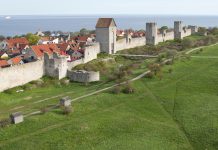Each year more than 330 million people travel to U.S. national parks. High visitation numbers are great news for the parks, most of which rely heavily on admission fees for revenue. But for those of us seeking isolated mountain trails and deserted, wind-swept beaches, masses of fellow park-goers can be a bit of a bummer. Travelers who’ve trekked the popular trails in some of the most visited national parks — Yellowstone, the Grand Canyon, Zion — on a summer Saturday morning can attest to the crawling crowds that descend upon the nation’s most famous parks in high season.
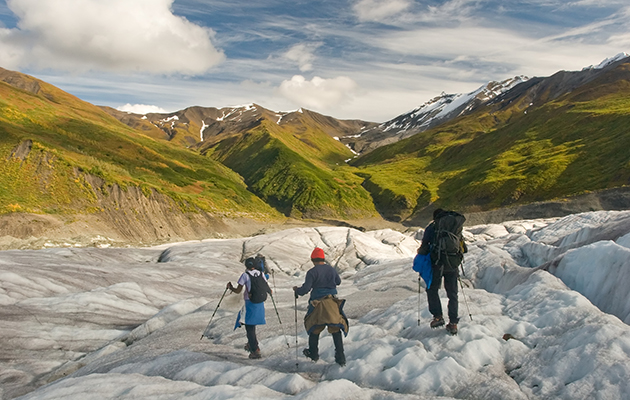
If you’re seeking a quieter national park experience, it’s a good idea to travel to your favorite park during shoulder season or even low season (which for most parks is during winter). Even better, you can plan a trip to a less visited national park, where crowds are sparse throughout the year.
Most less visited national parks see small numbers of travelers due to limited accessibility and services. Some have vast expanses of wilderness with no roads or no lodging. Others can only be accessed by boat or plane. But these more isolated national parks offer fascinating natural features and an abundance of wildlife, and boast beautiful landscapes on par with the most popular parks — from magnificent sweeping canyons to fertile tropical rain forests.
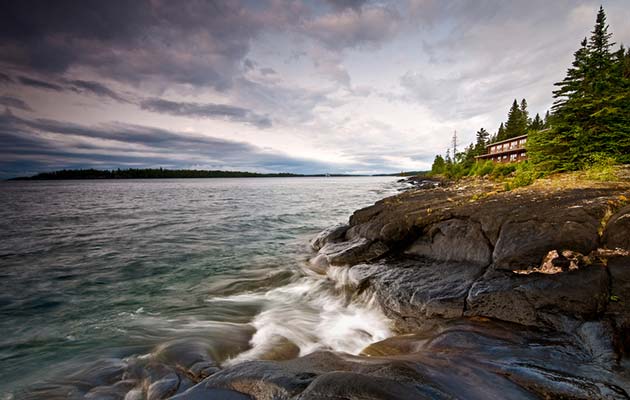
Isle Royale National Park is only accessible by boat or seaplane, which explains why this gorgeous, isolated archipelago of islands in Lake Superior sees just 25,000 visitors per year. The misty main island, Isle Royale, is the perfect place to retreat from civilization. There are no roads here, and wheeled vehicles — including bikes — are not permitted in the park (except for wheelchairs).
Those who make their way by water or air from nearby Michigan or Minnesota will undoubtedly find this unspoiled natural haven well worth the trip. Visitors can explore sunken vessels by diving in the island’s surrounding waters, kayak on foggy inland waterways or hike through bogs and thick forests, where it’s common to spot indigenous animals like wolves and moose.
It’s nearly impossible to see Isle Royale in a day, so most visits to the park include a few nights’ camping or a stay at Rock Harbor Lodge, the only hotel on the island. For those less comfortable exploring an island wilderness independently, organized activities from fishing charters to ranger-led sightseeing trips are available in the park.
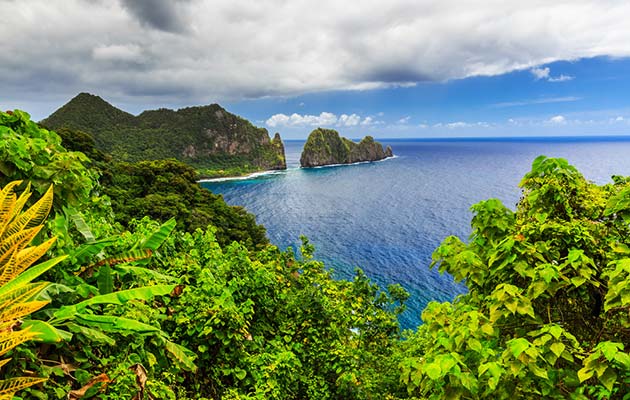
Those who equate national parks with grand American mountain ranges and historic pioneer trails may be surprised to learn there’s a U.S. national park in the South Pacific. National Park of American Samoa has spectacular tropical scenery, plus extensive coral reefs and paleotropical rain forests. One of the park’s most unique features is its homestay program, a fantastic opportunity to learn about the Samoan culture, Polynesia’s oldest civilization. Visitors can live like true South Pacific locals by becoming houseguests of participating Samoan hosts and taking part in village activities such as weaving and cooking.
Snorkeling near coral reefs in the warm Pacific Ocean and hiking trails that wind through stretches of deserted white-sand beaches and over rocky sea cliffs are two activities that top the list for many park visitors. Wildlife watching is also a must in National Park of American Samoa. Rich in biodiversity, the park is home to extraordinary animals that can be found in no other national park, including a large population of Samoan fruit bats (also known as flying foxes). The park’s coral reefs harbor an impressive diversity of fish — more than 950 species.
There are just a handful of flights that depart from the United States (Honolulu) to Pago Pago, the closest airport to the park. This limited accessibility naturally means very few tourists — about 29,000 a year.

Bryce Canyon is part of the Grand Staircase, a scenic geological region of the Southwest that also includes Zion National Park and the Grand Canyon. Bryce Canyon by far is the least traveled of the three. Bryce welcomes about 2.3 million visitors each year, which pales in comparison to the Grand Canyon’s 5.9 million and Zion’s roughly 4.3 million annual visitors.
Although Bryce is less visited than the other Grand Staircase parks, it offers equally impressive canyons and geological formations. The park is studded with hundreds of “hoodoos,” fantastical, spiraling rock formations that pepper the area’s dramatic canyons. Visitors to Bryce can hike the park’s scenic trails (or hit the trails on horseback), past legions of hoodoos and bristlecone pines, and glimpse jaw-dropping vistas from the canyon rim.
At night, Bryce Canyon is an ideal site for stargazing. Due to the park’s high elevation and low light pollution, it’s possible to see thousands of stars twinkling in the night sky. In fact, Bryce Canyon’s stargazing conditions are comparable to those at world-class astronomical research locations. Bryce Canyon rangers host enchanting guided full-moon hikes, as well as astronomy programs during which visitors can peer at planets and stars through high-tech telescopes. Both activities are free.

Tired of packed summer beaches? Head to Assateague Island National Seashore, where you’ll share the sand with far fewer crowds — plus wild horses, shorebirds and a host of other non-human coastal inhabitants. Assateague Island National Seashore is an undeveloped barrier island located off the coasts of Virginia and Maryland that’s best known for its galloping herds of wild horses. In addition to the horses, an abundance of animals can be spotted on land or in the ocean, especially within the Chincoteague National Wildlife Refuge, located at the southern end of Assateague Island. Bring some binoculars and keep your eyes peeled for wild ponies, red foxes, elk, bottlenose dolphins, humpback whales and migratory shorebirds.
Peak season on Assateague Island is from April through October. During this time, travelers looking to completely avoid the presence of other people should obtain a backcountry permit, which gives visitors access to the less traveled parts of the park. Backcountry campers can doze off to the sounds of crashing waves at one of several oceanside campsites, or sleep in a shady forest by the bay. You can’t take your car to the backcountry, but getting there by foot or canoe (which can be rented on the island) is half the fun.
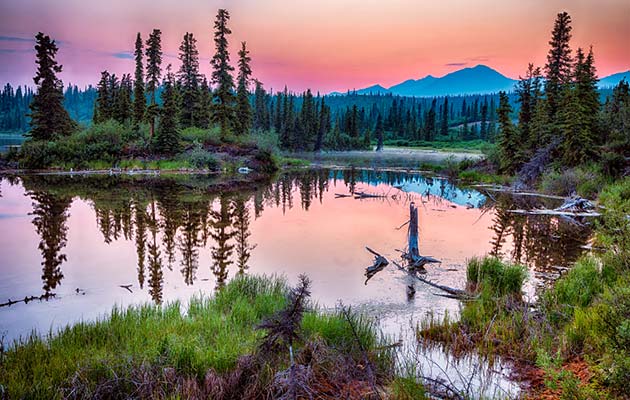
The United States’ largest national park, Wrangell-St. Elias National Park, is a massive expanse of iconic Alaskan landscapes — snow-capped peaks, pristine glaciers, herds of mountain caribou and thick boreal forests. The scale of Wrangell-St. Elias is astounding, and it’s difficult to describe the park without ticking off a list of superlatives. Wrangell-St. Elias encompasses over 13 million acres, the equivalent of about six Yellowstone National Parks. Nine of the United States’ 16 highest mountain peaks are located within the park, including Mount Wrangell, one of the largest active volcanoes on the continent, and Mount St. Elias, the second-highest peak in the U.S.
Despite Wrangell-St. Elias’ impressive numbers, its visitation is surprisingly low. Fewer than 80,000 people visit the park each year. We crunched the numbers and discovered that if all annual visitors were in the park at the same time, each person would have more than 162 acres of remote Alaskan wilderness to him or herself.
Why so few visitors? Because of Wrangell-St. Elias’ remoteness and breadth, planning a visit here can be quite challenging. There are only two roads that actually enter the park, neither of which is paved. Accessibility is limited, and modern conveniences like running water and electricity are few and far between. After all, this is the Alaskan wilds. But if you’re intrepid enough to plan a trip to Wrangell-St. Elias, you’ll find a wealth of incredible wilderness-oriented activities, from glacier hiking to sea kayaking, at your disposal.

